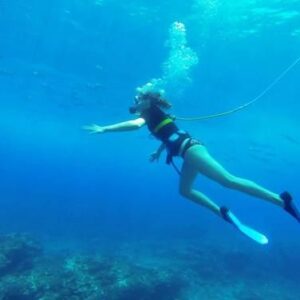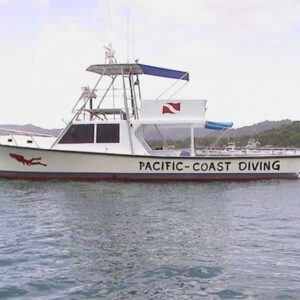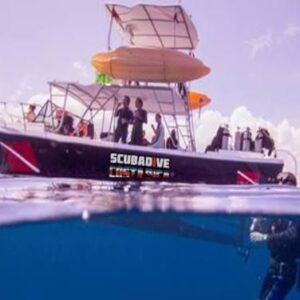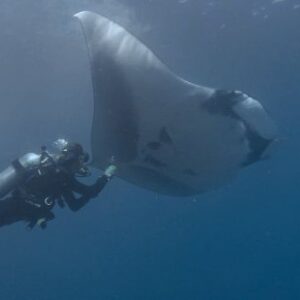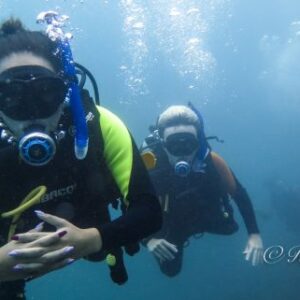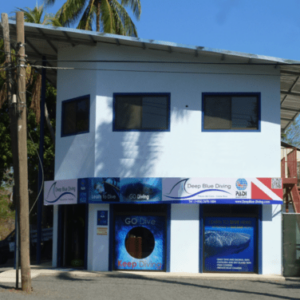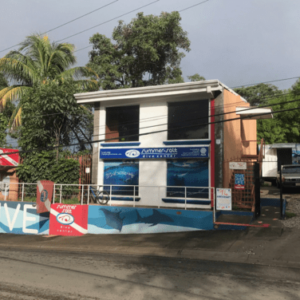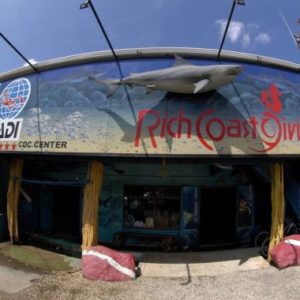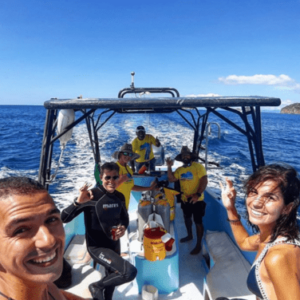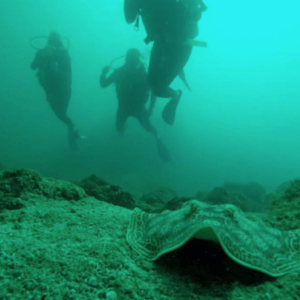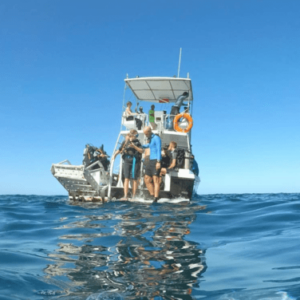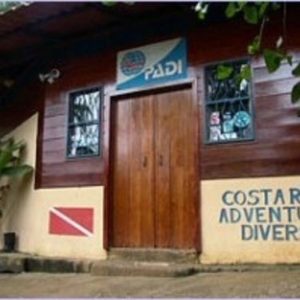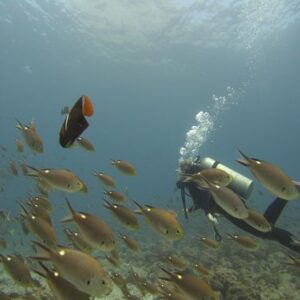Costa Rica, which means “rich coast,” offers breathtakingly beautiful biodiversity—both on land and below water. Extending from the Pacific Ocean to the Caribbean Sea, this lush landscape boasts sandy beaches, active volcanoes and verdant jungle. When it comes to diving, there’s top-notch scuba and snorkeling spots for all levels to be found here with an incredible array of coral reefs, volcanic rock formations, caverns and caves—all teeming with colorful marine life.
GETTING THERE
-
Costa Rica is a Central American country, meaning U.S. citizens require a passport to travel there. See TSA requirements for the most up to date information.
-
The main airports in Costa Rica are the Juan Santamaria International Airport (SJO) in San Jose or the Daniel Oduber International Airport (LIR) in Liberia.
-
The best way to get around Costa Rica is by car—either a rental from the airport or a taxi. The offshore islands require travel by liveaboard.
GOOD TO KNOW
-
Costa Rica is a Central American country.
-
TIME ZONE: Central Standard Time.
-
PRIMARY LANGUAGE: Spanish.
-
CURRENCY: the colón (plural: colones). U.S. dollars are accepted in many tourist areas.
-
PHONE AND INTERNET: Phone service is available from most U.S. phone carriers (you may need to activate international roaming). Internet is readily available including Wi-Fi at hotels and restaurants. The international calling code is +506.
-
VOLTAGE: 110 (the U.S. and Canada use 120 V so converters or adapters are typically not needed).
-
The rainy season runs from May to mid-November in most of the country.
-
There are currently no travel health and safety notices in effect for Costa Rica.
DIVE CONDITIONS
-
Water temperatures range from 70 degrees Fahrenheit in winter to 85 degrees in summer.
-
Average water visibility is 50 to 100 feet but can be higher or lower depending on the weather.
-
WHEN TO GO
-
Scuba diving in Costa Rica is available all year-round although more advanced divers may want to go during the rainy season (May to November) when pelagics are plentiful. The dry season (December to April) typically has calmer seas and high visibility.
-
Whale season runs from December through March.
-
The peak season for tourism is late November to late April.
-
WHAT YOU’LL SEE
-
From large pelagics (think: whales, orcas, dolphins and manta rays) to schools of colorful fish (like jacks and parrotfish), Costa Rica offers an impressive display of aquatic life guaranteed to delight divers and snorkelers of all levels. Whether you’re exploring coastal reefs or offshore islands, there’s plenty of spectacular corals, sponge and gorgonians to discover (and amazing creatures floating all around them).
BEST SCUBA DIVING SITES IN COSTA RICA
COCOS ISLAND
Located over 300 miles southwest of Cabo Blanco (advanced divers can visit on a liveaboard vessel), this magical underworld features an abundance of spectacular marine life such as rays, sharks, tuna, dolphins and endemic fish species like the red-lipped batfish. This is also where whales come to calve. Above water is a national park (movie fans might recognize it from Jurassic Park) that is mostly inaccessible.
CAÑO ISLAND
This government protected marine park lies about 10 miles from Punta Llorona on Península de Osa in South Puntarenas and boasts gorgeous diving sites for all levels. Don’t be surprised if you bump into a friendly turtle or dolphin, glide next to manta rays and moray eels or even spot bigger mammals like orcas and whales. Despite its proximity to the shore, visibility in these crystal-clear waters is excellent, often extending past 80 feet.
CATALINA ISLANDS
Experienced divers will love exploring this island chain in the Guanacaste region of Costa Rica and the many arches, caves and caverns found among the coral-encrusted volcanic rock formations. Cruising through these structures are sharks, sea turtles, schools of fish (like devil rays and cownose rays) and Pacific Giant Mantas—the world’s largest species.
BAT ISLAND
Also located in the Guanacaste region, this secluded spot (about an hour’s boat ride from the shore) is another one that’s best for advanced divers—especially those who are eager for the opportunity to swim with bull sharks. These bright blue waters are also home to schools of fish like snappers and grunts as well as passing rays. Note: Visibility can vary from 20 feet to 100 feet, depending on the currents (that can be quite strong) and the waves.
BEST SNORKELING IN COSTA RICA
GANDOCA-MANZANILLO NATIONAL WILDLIFE REFUGE
Widely regarded as the premier snorkeling destination on Costa Rica’s Caribbean coast, these shallow reefs, protected bays and little islands are teeming with marine life. How does gliding next to sea turtles, dolphins and manatees sound? And the picture-perfect golden beaches and swaying palm trees aren’t too bad, either.
CAHUITA NATIONAL PARK
Head to the southern Caribbean coast to explore the lush jungles and white sand beaches of this beautiful park. You’ll find the best snorkeling at Punta Cahuita where stunning coral reefs and shimmering waters provide plenty of opportunities to interact with tropical fish and playful crustaceans.
TORTUGA ISLAND
This family-friendly spot on the Gulf of Nicoya offers clear, calm waters bursting with parrotfish, angelfish, turtles, moray eels and more. Dry off by catching some rays on the gorgeous white sandy beaches afterward.
DISCOVER UNIQUE THINGS TO DO IN COSTA RICA
ARENAL VOLCANO
Looming over 5,000 feet high, viewing this active volcano from the Arenal Observatory Lodge is popular with visitors. (Don’t worry—it’s been quiet since 2010.) Just keep in mind that what you’ll see is dependent on the weather. While you’re there, you may want to check out the ultra-luxurious Tabacón thermal springs. Lapping up the mineral-rich waters, rich greenery and peaceful waterfalls isn’t free but it’s a heavenly way to spend an afternoon.
MONTEVERDE CLOUD FOREST RESERVE
Sure, you could walk through this rich wildlife reserve or for adventure-seekers, why not try a Sky Walk (hanging bridges) or Sky Trek (zip lining)? Located in the Northern Plains, this lush park boasts hundreds of exotic birds, mammals and plant species to delight your senses. It gets its name from the misty cover that shrouds the area, lending a magical feel to the experience.
NICOYA PENINSULA
Found on Costa Rica’s Pacific coast, this is the ultimate sun and surf destination. There are plenty of charming coastal towns to explore here but Montezuma is one of the most popular thanks to its budget-friendly accommodations and beautiful waterfalls.

